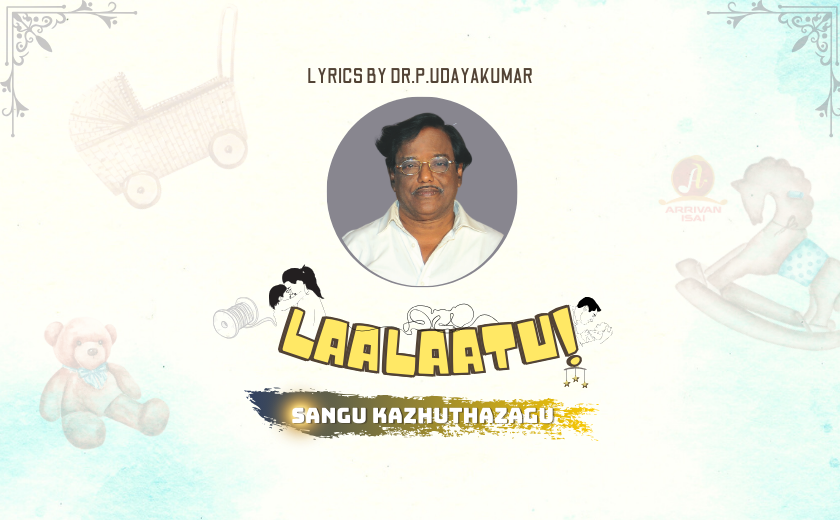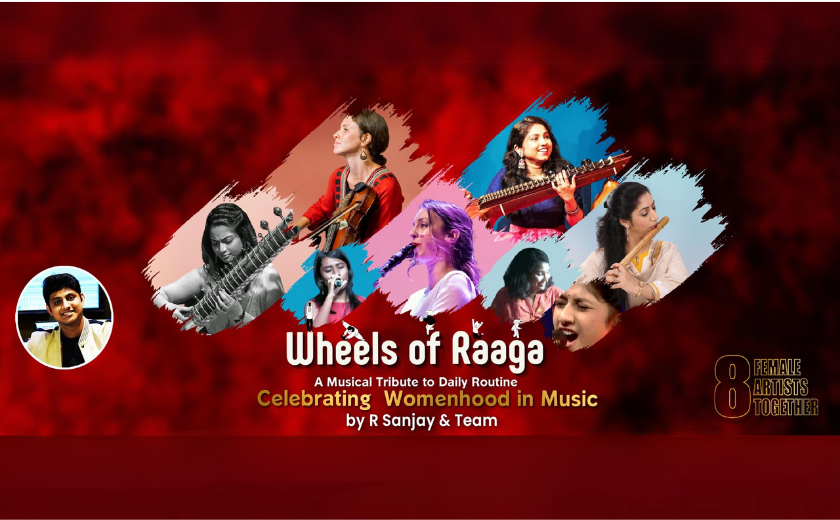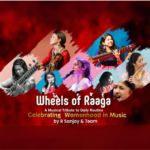குழந்தை தன் தாயின் பாலைக் குடித்து மகிழ்கிறதோ நிறைவாகிறதோ அதைப்போல் தாயின் ஓசை இசையாக வரும்போது தாயோடு ஒன்றி உறக்கம் கொள்கிறது. ‘தால்’ என்றால் நாக்கு. நாக்கிலிருந்து வரும் ஒழுங்குப்பட்ட ஓசை குழந்தை தன்னை மறந்து உறக்கம் கொள்ளுச் செய்கிறது. தூளிக்காகக் (ஆளை ) கயிற்றை விதாளத்தில் கட்டிக் கீழ்நோக்கித் தொங்கும் இரு முனைகளிலும் புடவையை இணைத்துக் குழந்தையை. அதில் கிடத்தி, ஆட்டிவிடும் போது குழந்தை உறங்கப் பாட்டுப்பாடுவதையே தமிழில் ‘தாலாட்டு’ என்பர். என் முதல் மகன் கதிரவனை அவ்வாறு உறங்கச் செய்யும் போது என் மனைவியிடம் ஏதேனும் ஒரு தாலாட்டு பாடு என்றேன். தனக்கு எதுவும் தெரியாது என்று சொன்னார்கள் உடனே அமர்ந்து ‘சங்குக் கழுத்தழகு என் செண்பகமே கண்ணுறங்கு என்று தொடங்கிப் பாட்டு ஒன்று எழுதினேன். பிள்ளையை விரைந்து என் மனைவி பெற்று விட வேண்டும் என்று கட்டாயப்படுத்தாமல் எதிர்பார்க்காத சூழலில் என் மனைவி கருவுற்று ஆண்மகவு ஒன்றினை உரிய காலத்தில் பெற்றெடுத்தாள். என் திருமணம் தமிழ்த் திருமணமே. என்னுள் ஒன்றியிருந்த பேரறிஞர் அண்ணா, பெரியார் அவர்கள் சிந்தனைகளோடு மலர்ந்ததே இந்தப்பாடல் என்பதே உண்மை. அவனும் (மகன்) கடந்த நாற்பதாண்டுகளில் ஓர் ஓப்பற்ற நிறுவனத்தில் உயர்ந்த பீடத்தில் அமர்ந்து சிறக்கிறான். அவனுக்காக எழுதினேன். அவனும் செயல் மறவராக மட்டுமின்றி எழுத்து வேந்தராகவும் திகழ்கிறான். நெஞ்சம் இனிக்கிறது. பாட்டுக்குக் ‘கரு’ பொருள் அவனே. நாளை பாடல் பெற்ற தளமாவான் நிச்சயம். இந்தத்தாலாட்டுப் பாட்டினைத் தன் தம்பி புதியவன் மனைவி கருவுற்றிருந்த முதிர்வில் எங்கள் இதயத்தை ஈர்த்த, யாழிசை போல் இனிக்கும் குரல் செல்வி பிரியங்காவை வைந்துப் பாட வைத்திருப்பது தேர்த் திருவிழாவில் மங்கல இசையைக் கேட்பது மனம் மகிழ்கிறது.
Wheels of Raaga Album – https://arrivanisai.com/wheels-of-raaga-album The time theory in Indian Classical Music suggests that Ragas are associated with time. They are to be sung & listened at specific times in the day to create a specific mood or experience and appears to be at height of its melodic beauty and majestic splendor. There are some Ragas which are very attractive in the early hours of the mornings; others which appeal in the evenings, yet others which spread their fragrance only near the midnight hour. To determine the performance times of each raga, Pandit V.N. Bhatkhande divided the day into eight section or watches, then assigned each raga to a specific section according to its underlying tonal characteristics. Each note in a raga has a certain level of importance vis-a-vis the other notes, and these relationships change subtly during the different times of the day. The 24 hour period is divided into 8 section each lasting for three hours long, as follows: 04 a.m. to 07 a.m. 4th beat of the night Early Dawn; Dawn (before sunrise) 07 a.m. to 10 a.m. 1st beat of the day. Daybreak; Early Morning; Morning; 10 a.m. to 01 p.m. 2nd beat of the day. Late Morning; Noon; Early Afternoon; 01 p.m. to 04 p.m. 3rd beat of the day. Afternoon; Late Afternoon; 04 p.m. to 07 p.m. 4th beat of the day. Evening Twilight; Dusk (sunset); 07 p.m. to 10 p.m. 1st beat of the night. Evening; Late Evening; 10 p.m.to 1 a.m. 2nd beat of the night. Night; Midnight; 01 a.m. to 4 a.m. 3rd beat of the night. Late Night Each Raga is associated with a definite mood (rasa) or sentiment that nature arouses in human beings. The ancient musicologists were particularly interested in the effects of musical notes, how it effected and enhanced human behaviour. Music had the power to cure, to make you feel happy, sad, disgusted and soon. Human body is dominated by the three fundamental elements – Kapham , Pittam and Vatham . These elements work in a cyclic order of rise and fall during the 24 hour period. Also, the reaction of these three elements differ with the seasons. Hence it is said that performing or listening to a raga at the proper allotted time can provide profound impact on health of human beings. The approximate times of these cycles are as follows First cycle: 6 A.M. to 10 A.M. – Kapha 10 A.M. to 2 P.M. – Pitta 2 P.M. to 6 P.M. – Vata Second cycle: 6 P.M. to 10 P.M. – Kapha 10 P.M. to 2 P.M. – Pitta 2 A.M to 6 P.M. – Vata Note: Time theory of ragas may be said to be only advisory and not mandatory.





